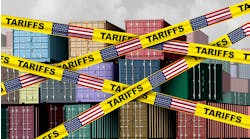Today, one of the most critical contributors to a manufacturer’s growth is often one of the most underappreciated drivers of its long-term success. Growth of any kind requires the right ecosystem—one that strategically aligns and efficiently deploys ongoing public support for manufacturing innovation.
As chief manufacturing officer for Connecticut—the state ranked the fourth most innovative by Bloomberg—and as a manufacturing general manager with over 20 years of experience, I know firsthand how influential a strong public/private ecosystem can be to any individual company’s growth. Here are five questions I believe are essential for any leader to ask to build the right ecosystem to support manufacturing innovation.
1. Are industry experts empowered to shape public policy?
The most forward-thinking governmental organizations aren’t just giving manufacturers a seat at the policy-making table. They’re welcoming them to the head of the table. I’m fortunate to be in a state that created a chief manufacturing officer role that is part of the executive branch of state government — with direct access to the Gov. Ned Lamont and his administration. This underscores the commitment from the highest levels of Connecticut’s state government to strengthen public/private partnerships and to put industry experts in leadership positions.
Most manufacturers don’t have time for advocacy. That’s my role—I serve as a concierge to Connecticut’s manufacturers, and as their voice to the governor and legislature. Already I’ve had an opportunity to tour 84 manufacturers across the state and speak to another 125 on what I call my “lean in, listen and learn” tour. These conversations are critical in identifying industry-wide challenges and opportunities that can inform public policy, as well for sharing information about potential connections, workforce training programs and funding resources, just to name a few.
2. Are the state’s public policies truly aligned with local industry’s needs?
The best overarching macro policies are built upon an in-depth understanding of the micro-realities of your state’s manufacturing sector. For example, in Connecticut, we are home to nearly 4,000 manufacturing companies. But while 40% of our manufacturing employees work for the top 25 global leaders in our state, 60% work for Connecticut manufacturers with fewer than 25 employees.
Together, these thousands of smaller Connecticut companies make up one of the strongest manufacturing supply chains in the U.S. That means that to best support our largest enterprises, we need to better understand the challenges of our smaller manufacturers. In response, we’re focused on helping smaller companies embrace, test and deploy Industry 4.0 technologies — like model-based definition, additive manufacturing, cybersecurity and I.O.T.
Without access to the right training resources, funding sources and testing environments, it’s incredibly difficult for smaller organizations to leverage today’s technological advancements. The faster we can help smaller manufacturers integrate new technologies into their operations, the stronger our entire manufacturing ecosystem becomes. So, we’re creating a Manufacturing Strategic Plan for Connecticut to serve as a roadmap for expediting the digital transformation of all Connecticut manufacturers, and to address the industry’s other pressing needs.
Our five strategic priorities are:
· Develop a robust workforce
· Foster a healthy manufacturing ecosystem
· Encourage a culture of innovation
· Establish communication channels for all stakeholders
· Coordinate resources to simplify our efforts
3. Is the state helping to fund the practical application of innovation?
Key to accelerating any type of digital transformation is to financially support it. When structured wisely, public funding for innovation can also act as a powerful catalyst for private investment in new technologies.
In 2015, Connecticut’s legislature established a Manufacturing Innovation Fund (MIF) that has since received $100 million in state funding. This fund is designed to strengthen the most effective initiatives already established and create new programs to meet the changing needs of Connecticut’s manufacturers. To date, the Connecticut MIF has provided matching grants for equipment purchases and funding for kindergarten-through-college-educational programs, invested in large-scale equipment installations where manufacturers can test out new technologies and supported all kinds of workforce training programs. Better still, every $1 invested by the MIF sparks nearly another $2 investment by private companies and other third parties. That’s the tangible multiplier effect of smart public funding in innovation.
To sustain that kind of public support, though, it’s critical that manufacturing leaders continually reach out to state leaders. I encourage our manufacturers to invite their local legislators to tour their operations, to become active members of their local Chambers of Commerce and to continually remind government and community leaders how important manufacturing is to the state’s economy.
4. Are the state’s educational institutions priming the manufacturing workforce pipeline?
Across the country, manufacturers’ single biggest impediment to growth is access to a well-trained workforce. Connecticut is fortunate to rank #4 for both the most highly educated — and the most highly productive — workforce in the country. But like the industry at large, we’re challenged by the double whammy: the growing number of experienced pros retiring from the industry and the lagging number of talented students choosing the profession.
What’s encouraging, though, is how closely our government, industry and educational leaders are working together to prime the talent pipeline. Our technical high schools, community colleges and 4-year universities are consulting with industry leaders on their curriculum. They’re laddering their degree programs. They’re partnering on mutually beneficial training opportunities. And the state government, through our Manufacturing Innovation Fund, is reimbursing manufacturers for internship and apprenticeship wages as well as for incumbent worker training.
5. Is collaboration fostered across the sector?
Manufacturing is a team sport. To win in today’s competitive world takes leveraging the collective strengths across the government, education and industry sectors.
But it’s not just public/private partnerships that need to be fostered to advance innovation. It’s also critical to facilitate collaboration across manufacturers. One way we’ve done that is by creating a program called CT Supplier Connection. Through this program’s website, we’re encouraging Connecticut manufacturers to look in-state first for supply chain manufacturers. This program enhances the visibility of small and diverse manufacturers who want to do business with procurement groups at some of our state’s larger companies.
We are also fortunate that our manufacturers understand the importance of collaboration. We have nine independent associations that all convene as one under the Connecticut Manufacturers Collaborative. This organization facilitates communications across all members and helps to build consensus around strategic priorities for manufacturing in Connecticut.
It’s also critical to continually re-evaluate those strategic priorities. That constant re-calibration is what has enabled Connecticut to build on the pioneering work of such manufacturing icons as Eli Whitney, Igor Sikorsky, Charles Goodyear, Charles Kaman, Francis Pratt and Amos Whitney, and continue to foster manufacturing innovation.
Paul S. Lavoie was appointed by Gov. Ned Lamont as the Chief Manufacturing Officer for Connecticut in February 2022. He has extensive industry experience in the manufacturing and engineering fields. Lavoie also serves as the board chairperson of the Central Connecticut Chambers of Commerce and member of the i4.0 Working Group, the Governor’s Workforce Council and U.S. Sen. Chris Murphy’s Aerospace and Advanced Manufacturing Advisory Council.




